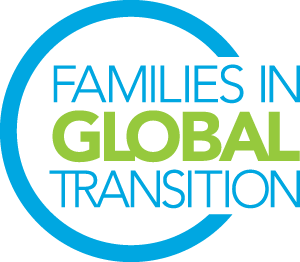“Twice-exceptionality” describes students who are experiencing both giftedness and disability, inclusive educator Sue Prior tells us.
.png)
Interview with Sue Prior
Note: Sue was scheduled to present at FIGT2020. This article was written before the cancellation of FIGT2020 was announced.
Can you tell us a bit about yourself?
I am an Australian-born daughter of British immigrants (a Scottish mother and an English father). A parent, wife, sibling, friend, and published academic author, I originally trained as a primary school teacher but quickly detoured into special education when I became fascinated with the diversity and personalized approach to learning.
With my husband I spent 20 years in Western Australia where both our children were born. We lived in England for a year, researching our genealogy and spending time with extended family across the UK, Europe, and the US. Through traveling, I connected with family, some of whom I had never met except in the stories of my parents. This yearning to trace family outside of Australia gave me insight into my story and increased my sense of “wander.”
In 2006 we moved to Thailand and spent three years in an international school community in Bangkok. We then moved to yet another state of Australia, where our children eventually finished high school and moved on to further study/work.
I have a special interest in giftedness and twice-exceptionality, which developed after further Master’s degree study into gifted education.
Currently, I am an executive committee member of the World Council for Gifted and Talented Children and a trained parent group facilitator with SENG (Social and Emotional Needs of the Gifted). I worked as a gifted education consultant for 140 schools in Brisbane, and more recently taught in international schools in Hong Kong.
I am a constant traveler who loves being home, wherever that may be!
Please tell us more about “twice-exceptionality.”
Twice-exceptionality or “2e” describes a relatively small but very diverse group of students who are experiencing both giftedness and disability. For example, a child might be gifted academically yet have a physical disability or may be gifted in maths yet have a reading disability.
There is no universal definition of giftedness or twice-exceptionality but there is international legislation regarding disability, although definitions may vary.
In twice-exceptionality, the giftedness and the disability may mask each other in school, particularly if there are no opportunities to display the giftedness, so that a student may appear “average” or only be seen to have difficulties. There are cases where the giftedness is demonstrated but the difficulties are hidden/not identified. It can be a paradox!
If neither exceptionality is identified or only one is identified, leaving the other issue unacknowledged/unaddressed, a student’s learning and wellbeing can be significantly affected. Twice exceptionality can be more intense than either exceptionality alone.
As international schools grow rapidly across the world and especially in Asia, I am looking at 2e in an international school context and its potential contribution to bridging differences.
What are the challenges specific to an international-school setting?
International schools are independent of the national education system. Their curriculum is different from that in the host country and they do not usually operate within the same government requirements as a local school.
Students with disabilities in an international school may not receive the same support available or indeed required in a government or local school. Structures, governance, and other teaching guidelines may not apply as they do in local schools.
Why are you interested in twice-exceptionality?
I am interested in the 2e students’ diversity and paradox/possibility of boundary-crossing or shapeshifting. In education, there is a tendency to group students by somewhat arbitrary definitions. The nature of 2e challenges these definitions and borders.
In international schools, students grapple with many layers of identity. So this is a fascinating topic to me, having worked in education most of my life and still learning about diversity in contexts and how to nurture the best in people.
I’d like to make more people aware of the existence of 2e, both its paradoxes and potential, and understand how we can shape environments — curriculum resources, equipment, teacher education, culture and social support — that either support or hinder growth. And that we sometimes find hidden gifts in people.
What do “diversity and inclusion” mean to you?
Diversity and inclusion to me are about equity. It means valuing differences and nurturing strengths while creating an enriching environment — so that we each can belong and contribute to the greater good.
I learned about diversity, interdependence, learning in context, and valuing student voices (and found my vocation!) in my first job as a social educator in an innovative community residential special-education school program in New South Wales. There, I worked with students aged 15-18 on developing their independent-living and community-access skills.
In the early 2000s, my husband, our two then-young children, and I took part in a 6-week school pilgrimage through India and Nepal to work as volunteers with some of the most disadvantaged communities and people. This journey was transformative for us and for me professionally.
Anything else you’d like to share?
I am so glad to have found FIGT. It offers a great mix of research, belongingness, diversity, and understanding across the world
 We are focusing on “diversity and inclusion” this month. Please join us on Facebook, LinkedIn, or Twitter to access more engaging stories and videos (publicly available for the month and then archived to the members’ only section of this website).
We are focusing on “diversity and inclusion” this month. Please join us on Facebook, LinkedIn, or Twitter to access more engaging stories and videos (publicly available for the month and then archived to the members’ only section of this website).

